Basketball is a fast-paced and thrilling sport that captivates fans around the globe. While the on-court action and jaw-dropping plays are undoubtedly exciting, there’s another aspect of the game that holds great significance: basketball statistics.
These numbers provide a deeper understanding of player and team performances, allowing enthusiasts and experts alike to analyze and evaluate the game on a whole new level.
We’ll explore a comprehensive list of basketball statistics, shedding light on the key metrics that shape the sport and contribute to its ever-evolving strategies. Stay focused.
What is the Basketball Statistics List?
Basketball statistics encompass a wide range of metrics that track various aspects of the game, including individual player performance, team performance, and overall game analysis.
These statistics are used to evaluate player skills, assess team strategies, analyze game outcomes, and make informed decisions regarding coaching, player rotations, and scouting.
While there are commonly used statistics in basketball, such as points, rebounds, assists, steals, and blocks, the specific statistics included in a basketball statistics list can vary depending on the context and purpose of the analysis.
Different leagues, teams, analysts, and statisticians may focus on different metrics based on their objectives and the available data. The basketball statistics list is continually evolving as the game evolves and new metrics and analytics methods emerge.
With advancements in technology and the availability of detailed player tracking data, more sophisticated statistics and metrics have been developed to provide deeper insights into player performance and team dynamics.
What Are the Basketball Statistics on the List?
Basketball is a sport that is rich in statistics, which provides a comprehensive overview of players, teams, and games. These statistics help to quantify and evaluate performance, track records, and overall success.
The basketball statistics list encompasses various categories that measure different aspects of the game. In this detailed explanation, we will explore the key statistics that are commonly used in basketball.
Points (PTS)

Source: fadeawayworld.net
Points are the fundamental measure of a player’s offensive contribution. Each successful shot, including field goals and free throws, adds points to a player’s total. Points are typically used to determine the leading scorers in a game, season, or career.
Field Goal Percentage (FG%)

Source: wikipedia.org
The field goal percentage calculates the ratio of successful field goals to attempted field goals. It indicates a player’s shooting efficiency by measuring the proportion of shots made. A higher field goal percentage implies better shooting accuracy.
Three-Point Percentage (3P%)

Source: sbnation.com
This statistic focuses specifically on a player’s accuracy from beyond the three-point line. It is calculated by dividing successful three-point shots made by attempted three-point shots.
Three-point shooting is crucial in modern basketball, and a higher percentage indicates better shooting proficiency from long range.
Free Throw Percentage (FT%)
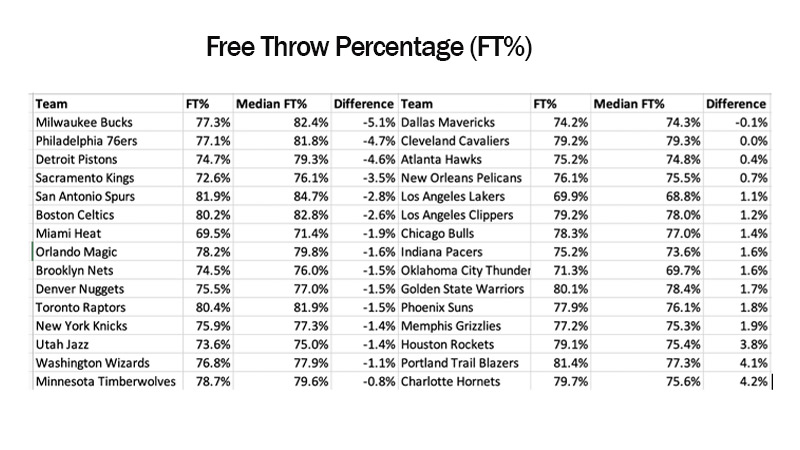
Source: qsao-queens.com
The free-throw percentage measures a player’s accuracy from the free-throw line. It is calculated by dividing successful free throws made by attempted free throws.
This statistic reflects a player’s consistency and skill in converting free throws, which are uncontested shots from the foul line.
Rebounds (REB)
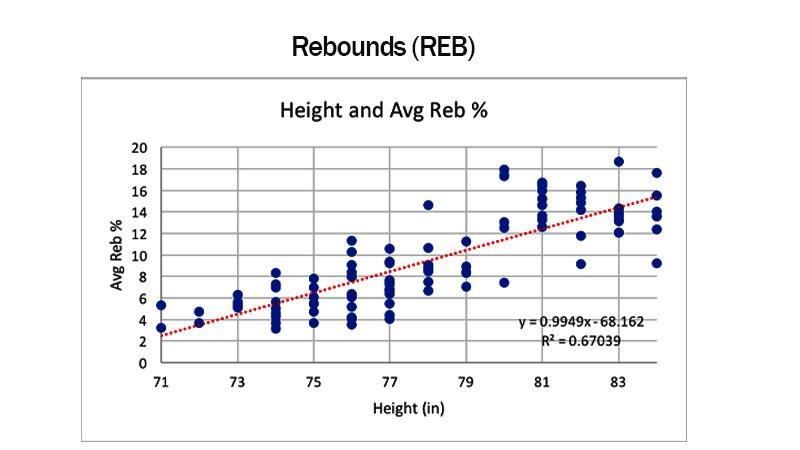
Source: pacifictakes.com
Rebounds track a player’s ability to secure missed shots, both offensively and defensively.
It includes two types of rebounds: offensive rebounds (OREB), which occur when a player gains possession of a missed shot by their team, and defensive rebounds (DREB), which occur when a player gains possession of a missed shot by the opposing team.
Rebounding is crucial for maintaining possession and creating scoring opportunities.
Assists (AST)

Assists measure a player’s ability to set up their teammates for successful field goals. An assist is recorded when a player makes a pass that directly leads to a made basket by another player. This statistic highlights a player’s playmaking and court vision.
Steals (STL)

Steals track the number of times a player legally takes the ball away from an opposing player, resulting in a turnover. It demonstrates a player’s defensive prowess, anticipation, and ability to disrupt the opposing team’s offense.
Blocks (BLK)
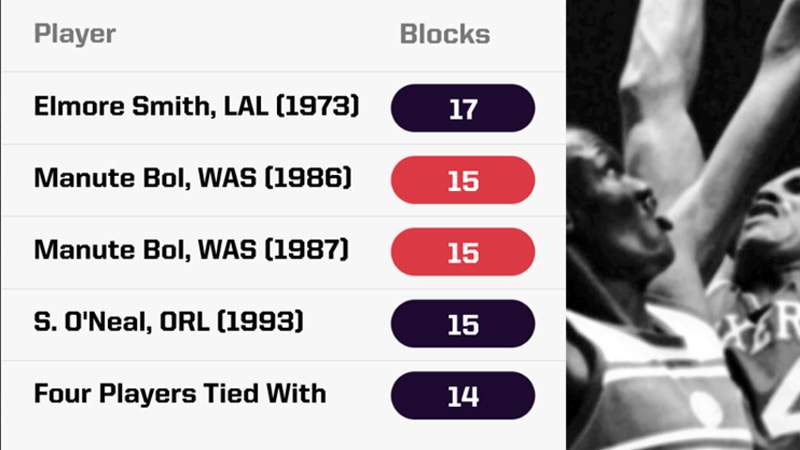
Source: theanalyst.com
Blocks measure the number of shots a player successfully blocks, preventing the opposing team from scoring. It reflects a player’s shot-blocking ability, timing, and rim-protection skills.
Blocks can significantly influence a game’s momentum and deter opponents from attempting shots near the basket.
Turnovers (TO)

Source: fadeawayworld.net
Turnovers occur when a player loses possession of the ball without a steal being credited to the opponent. This can happen due to errors such as bad passes, offensive fouls, traveling violations, or stepping out of bounds.
Tracking turnovers helps evaluate a player’s decision-making and ball-handling skills.
Efficiency Rating (EFF)
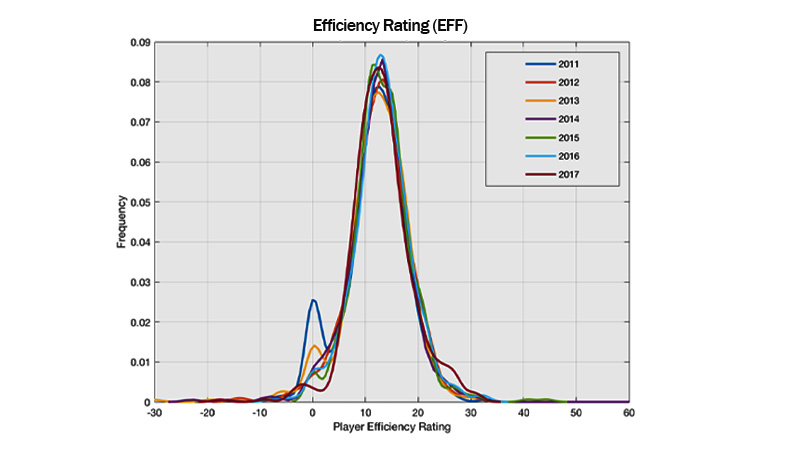
Source: squared2020.com
The efficiency rating is a comprehensive statistic that quantifies a player’s overall contribution to a game.
It takes into account positive actions (points, rebounds, assists, steals, blocks) and negative actions (missed shots, turnovers) to provide an overall rating.
The formula for calculating efficiency rating varies slightly across different leagues and systems.
Player Efficiency Rating (PER)
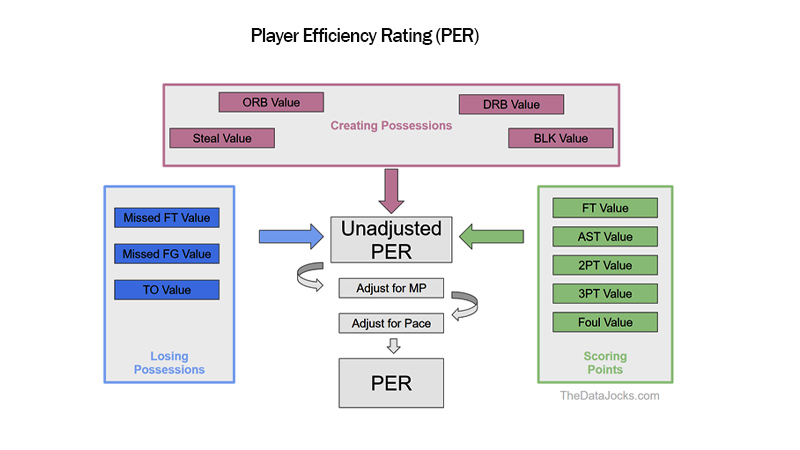
The player efficiency rating is a more advanced statistic that aims to evaluate a player’s overall effectiveness by considering multiple factors.
It takes into account positive contributions such as points, rebounds, assists, steals, and blocks, while also accounting for shooting efficiency, turnovers, and minutes played.
The PER provides a single number that represents a player’s overall impact on the game.
Plus/Minus (+/-)

Source: reddit.com
The plus/minus statistic measures the point differential when a specific player is on the court. It compares the number of points scored by the player’s team to the number of points scored by the opposing team during that player’s time on the court.
A positive plus/minus indicates that the player’s team outscored the opponent while they were playing, while a negative plus/minus indicates the opposite.
Win Shares (WS)

Source: sportsbettingdime.com
Win shares aim to quantify the number of wins a player contributes to their team. It takes into account a player’s offensive and defensive contributions, as well as the overall success of the team.
The calculation considers factors such as points, rebounds, assists, steals, blocks, shooting efficiency, and team performance.
Usage Rate (USG%)

Source: thedatajocks.com
The usage rate measures the percentage of a team’s possessions that a specific player uses while they are on the court.
It takes into account a player’s field goal attempts, free throw attempts, and turnovers.
A high usage rate indicates that a player has a significant role in their team’s offense.
True Shooting Percentage (TS%)
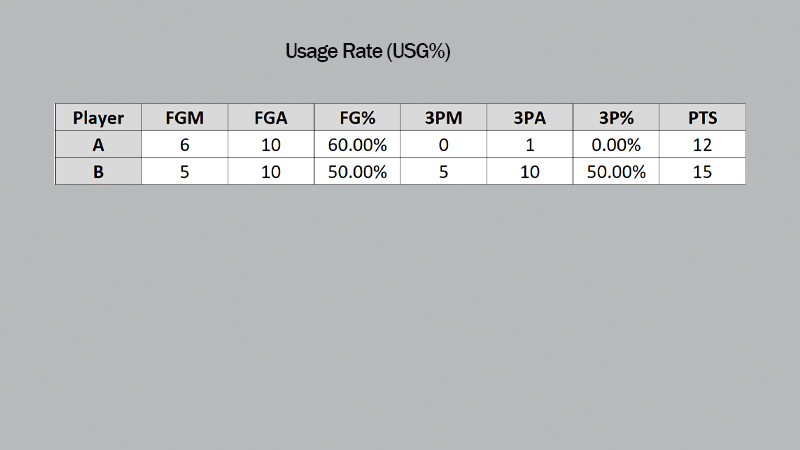
Source: thespax.com
The true shooting percentage calculates a player’s shooting efficiency by considering two-point field goals, three-point field goals, and free throws.
It provides a more accurate representation of a player’s scoring efficiency by taking into account all scoring opportunities.
These statistics form the core of basketball analytics and provide valuable insights into player performance, team dynamics, and game outcomes.
They are widely used by coaches, analysts, and fans to evaluate and compare players, track progress, make strategic decisions, and appreciate the intricacies of the game.
Significance of the Statistic List in Basketball
The basketball statistics list holds significant value for various stakeholders in the sport, including players, coaches, analysts, and fans. Here are some of the key reasons why these statistics are significant:
Player Evaluation and Comparison
Statistics provide a quantitative basis for evaluating and comparing players.
They allow coaches and team management to assess individual player performance, identify strengths and weaknesses, and make informed decisions regarding player roles, playing time, and team strategies.
Statistics also play a crucial role in player contracts, trades, and draft selections.
Performance Tracking and Improvement
By tracking statistics over time, players can monitor their progress and identify areas that need improvement.
Individual statistics such as shooting percentages, rebounds, and assists provide specific targets for players to work on, enabling them to refine their skills and contribute more effectively to their team’s success.
Game Planning and Strategy
Coaches and analysts extensively use statistics to develop game plans and strategies.
By analyzing team and player statistics, they can identify opponents’ strengths and weaknesses, determine optimal matchups, devise defensive schemes, and plan offensive plays that exploit favorable statistical trends.
Statistics help teams make data-driven decisions and adjust their game plans based on real-time performance.
Performance Recognition and Awards
Statistics are crucial for recognizing outstanding performances and determining award recipients. Leading scorers, rebounders, assist providers, and shot blockers are often acknowledged and celebrated based on their statistical achievements.
Awards such as the Most Valuable Player (MVP), Rookie of the Year, and Defensive Player of the Year are heavily influenced by statistical performance.
Fan Engagement and Fantasy Basketball
Statistics add depth and excitement to the fan experience. Fans analyze and discuss player and team statistics, compare their favorite players, and engage in friendly debates.
Fantasy basketball leagues, where fans assemble virtual teams based on player statistics, rely heavily on these metrics to determine the performance and success of fantasy teams.
Historical Context and Records
Statistics provide a historical record of player and team achievements. They allow fans and analysts to compare current players with past greats and evaluate their impact on the game.
Statistics also help establish and track records, milestones, and benchmarks, allowing fans to appreciate the historical significance of achievements.
Statistical Analysis and Research
Advanced statistical analysis techniques, such as regression analysis, efficiency ratings, and advanced metrics, enable analysts to gain deeper insights into player and team performance.
These analyses help uncover underlying trends, evaluate lineup combinations, measure impact beyond traditional statistics, and develop new metrics to further enhance the understanding of the game.
Scouting and Talent Evaluation
Statistics play a vital role in scouting and evaluating talent at various levels, from high school to professional leagues.
Scouts and talent evaluators use statistical performance as a starting point to identify promising players, gauge their potential, and assess their fit within a team’s system or playing style.
The significance of the basketball statistics list lies in its ability to objectively quantify and evaluate player and team performance, facilitate strategic decision-making, enhance fan engagement, recognize achievements, and contribute to the overall understanding and enjoyment of the sport.
FAQs
What are the essential individual player statistics?
Individual player statistics serve as a benchmark to assess a player’s contribution to the team’s performance.
Some of the essential individual statistics include points per game (PPG), rebounds per game (RPG), assists per game (APG), steals per game (SPG), and blocks per game (BPG).
These numbers reflect a player’s scoring ability, rebounding prowess, playmaking skills, and defensive impact.
What team statistics are crucial in basketball?
Team statistics provide insights into how well a team performs collectively. Points per game (PPG) and field goal percentage (FG%) indicate offensive efficiency, while defensive statistics such as opponent points per game (OPPG) and opponent field goal percentage (OFG%) reflect defensive prowess.
Additionally, rebounding metrics like total rebounds per game (TRPG) and offensive rebounds per game (ORPG) reveal a team’s dominance on the boards.
How do advanced statistics enhance basketball analysis?
Advanced statistics go beyond the basic numbers and delve into more sophisticated metrics, offering a comprehensive understanding of player and team performances.
Some popular advanced statistics include player efficiency rating (PER), true shooting percentage (TS%), usage rate (USG%), and defensive rating (DRtg).
These metrics help in evaluating a player’s overall impact, efficiency, and contributions on both ends of the court.
Are there any advanced team statistics worth considering?
Absolutely! Advanced team statistics play a crucial role in assessing a team’s performance and style of play.
Metrics like offensive rating (ORtg), defensive rating (DRtg), net rating (NRTG), and pace factor provide a holistic view of a team’s offensive and defensive efficiency, overall performance relative to opponents, and pace of play.
These statistics are valuable in comparing teams and understanding their strengths and weaknesses.
How can basketball statistics influence coaching strategies?
Basketball statistics play a pivotal role in shaping coaching strategies. Analyzing statistics helps coaches identify areas of improvement, devise game plans, and make in-game adjustments.
By studying individual and team statistics, coaches can optimize player rotations, target opponent weaknesses, and tailor offensive and defensive schemes to maximize their team’s performance.
Conclusion
Basketball statistics offer a wealth of information and insights that contribute to the excitement and strategic depth of the sport.
From basic individual and team statistics to advanced metrics, these numbers provide a comprehensive picture of player and team performances.
By understanding and analyzing basketball statistics, fans, enthusiasts, players, and coaches can gain a deeper appreciation for the intricacies of the game and make informed assessments about the sport they love.
So, whether you’re a dedicated fan or an aspiring coach, exploring the diverse range of basketball statistics is sure to enhance your understanding and enjoyment of this captivating sport. Best wishes.







